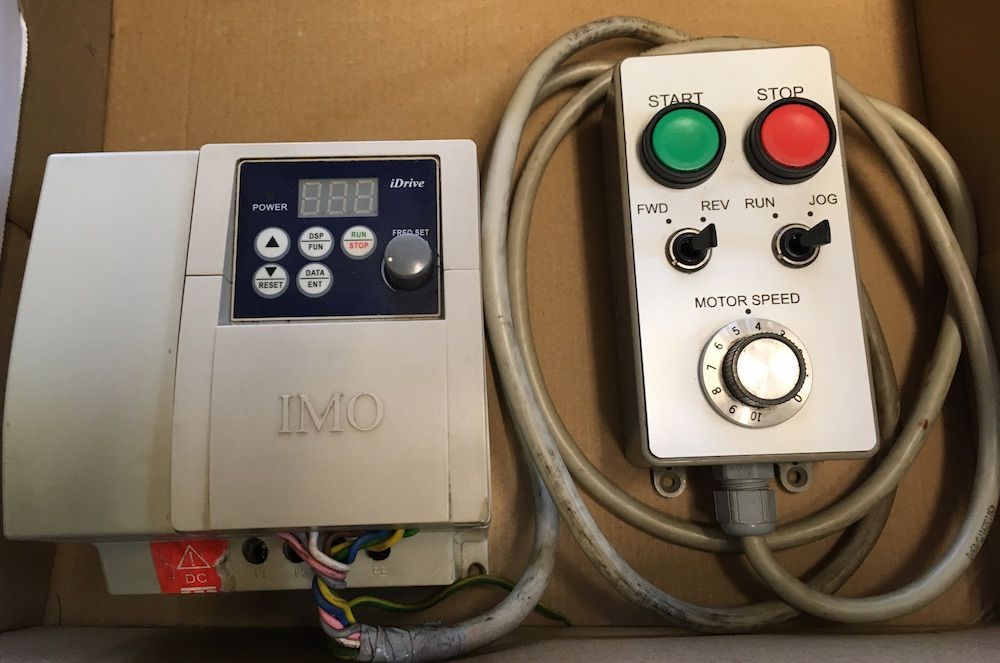Mark
Glad you have got the electrics thing sorted out.
PM me your e-mail address, can't send stuff via this site, and I'll put a data pack together for you covering the Erskine drive. Do you have a Bridgeport manual? If not I can include my wiring diagram and find an appropriate download link for you.
Easiest way to put the head on is to fix a stout bar pointing vertically up to the table and grab it with a collet in the spindle. Then the table and knee feeds can be used to align the head with the bolt holes. A few extra strategic supports (wood offcuts?) wouldn't hurt. As I recall it I used a 3/4" bar stuck into a 6" (ish) thick lump of timber clamped to the bed when I sorted my head out after buying the machine around 2004/05. I made sure the nose of the quill was set down hard on the wood. After so many years I no longer know if such a thick lump of timber is needed. This time round I shall use a special removing support made by welding a blank end R8 arbor to a 1" steel plate.
Sounds like Zan has done what I briefly considered doing when I got my Bridgeport back in 2004/05 but VFD boxes were way to expensive then. (Especially when a proper, commercial, 440 V output static converter surfaced at £35 and I had a motor in stock to make it a rotary.). I expect his circuit will do you just fine.
This is an example of a commercial VFD set up for a Bridgeport as supplied by Power Capacitors UK (the Transwave folk).

I grabbed it a few months back as the price was right and it was just down the road but I'm unsure if its exactly what I want so I might sell it on. That one is a vector drive unit and the guy who sold it to me said he didn't have any motor heating issues at low speeds despite not having an extra fan to help keep the motor cool. The man who used the Optidrive also made no mention of needing an extra fan.
I'm given to understand that modern Vector Drive inverters are much better at giving the motor exactly the right amount of power at exactly the right time so low speed heating isn't such an issue in machine tool use as it was with the older Voltage/Frequency types.
Considering the single speed toothed belt drive conversion I found a decent belt length and centre distance calculator at Technobots :- **LINK** and ran the American L section belt and pulley data through it.
For the two 40 tooth pulleys and 92 tooth belt the centre to centre distance comes out at 9.75”, 274.65 mm which looks right when waving a tape at my Bridgeport.
Can't quite get that with an 8M20 belt and pulley set. For same speed 1:1 drive nearest is two 36 tooth pulleys and a 105 tooth belt at 276 mm centre to centre distance. Closest I could fined was a 44 – 48 pair giving almost 10% speed reduction at 275.9 mm centres with 115 tooth belt.
I shall probably go for the 115 tooth 8M20 belt and 44 – 48 pulleys as having comfortably more load capacity and running the motor a little faster to help with low speed torque and cooling. Objectively the differences are pretty much academic really.
Clive
Edited By Clive Foster on 27/01/2021 14:20:14
 Barry Smith 4.
Barry Smith 4.




